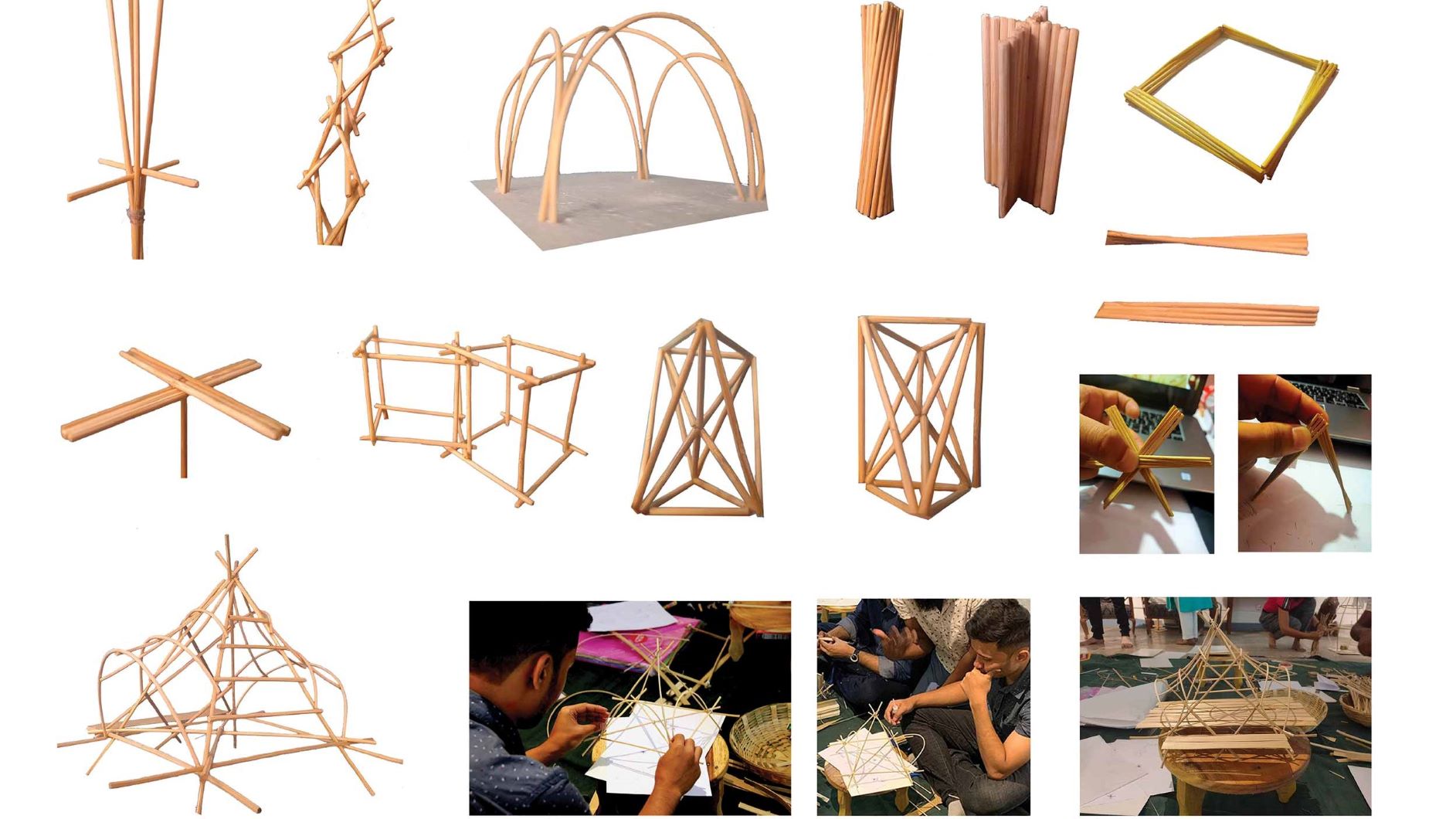top architecture design thesis 2020


ACHARYA's NRV
SCHOOL
OF ARCHITECTURE
BENGALURU, INDIA

Design thesis authored by
JEENUS SHRESTHA
share
THESIS SPECIFICATIONS
Thesis Title : Bamboo in Urban Environments
Location : St. Marks road, Bengaluru, India
Project type: Material Exploration
Year of completion : 2020
Name of Thesis mentor: Priya Joseph
Synopsis
Once called the Garden City, Bangalore has now been rapidly turning into a concrete jungle. According to a study conducted by IISC scientist, Dr TV Ramachandra and his colleague Dr Bharath H Aithal, Bengaluru in the space of 34 years has seen a jump of 1028% in concrete area or paved surface. Dr Ramachandra says that if rampant urbanization continues unchecked, the city would be uninhabitable by 2020. This transformation is the real cause for heat island effect, climate change and overall Global warming. The city, already facing scarcity of water, is hugely dependent on ground water which as per the study, is receding at a fast pace. The water table has declined to 300 m from 28 m, and 400 m to 500 m in a highly urbanized area. This is a really huge problem and has to be looked at in order to bring the city back to its original garden state. Hence, alternative construction materials have to be used in the construction field to reduce this increasing concrete jungle.
As architects we need to look at a bigger picture of the world and try to come up with various construction methods and design ideas to reduce the harmful impact towards it. There has to be a change in the materials used in the industry. The selection of material used in the project affects not only the user but also the environment around it. Hence, there has to be a change in the mainstream construction technology for the betterment of the future.
My interest towards bamboo started to develop a few years back in my home country ‘Nepal’ after I visited a school entirely made out of Bamboo for the local children. It felt very different as I had never seen bamboo used in a public building. I had seen bamboo in various other small sheds, houses but here it was a whole new space made out of the green material. This put me on to the path to finding out more about this special material that I had been seeing all through my childhood.
Need for Research
Looking at the current scenario of the building industry not many inventions have come up regarding construction material after the invent of concrete in the 1300 B.C. Concrete is still dominant in the industry by almost 80 % and has to be changed as it is one of the major producers of CO2 in the manufacturing stage and increases the heat island effect in the city. This eventually leads to global warming.
We as architects have to come up with ways to solve this problem by using different design methodology and materials.
Few questions that had come up before starting of the project are as follows:
Is bamboo a strong material?
How long can bamboo buildings last?
How high can bamboo structures be constructed?
Climatological effects on bamboo?
Do Buildings really need to stand still up to 100 years and more?
Should there be an opportunity for change in the design style?
Bamboo has been used since ancient times for houses, bridges and can also be seen as scaffolding in most of the countries.
The main problem here is the mind set of people where they think that bamboo is poor man’s material and cannot last for a long period of time. Their has not been a lot of research on this material in the field of construction as well.
The examples of bamboo seen today are mostly in rural areas as houses or resorts and fancy holiday destinations. There hasn’t been much use of this material in an urban context hence people haven’t been able to interact with its environment.
Design Approach
It first started with a lot of research on bamboo and its properties. Different design techniques used by various architects and engineers all around the world were taken into consideration and analysed. After this a suitable site was chosen for the project where the building can thrive and be explored easily. Along with this a lot was time was given in finding the right techniques to be used for construction through small scale model making and conceptual sketching. Furthermore, these design outcomes were detailed into a 3d software for overall analysis of stability.
The use of natural materials such as rammed earth and bamboo were encouraged which was easily available around the site. The building was divided into public (oat, retail stores, workshops) and private areas (library, office space) by a buffer zone (Accommodation for caretakers). The properties of the materials were enhanced to their full potential in the design process. The ground floor is made up of rammed earth which was excavated from the site itself while making an underground auditorium. The shape of the rammed earth walls further gave strength to the building. A grid system consisting of steel sections combined with bamboo was laid on top of the ground floor which increased the stability and spatial value.
Criteria for Site Selection
Bangalore was chosen as the city for the project because of following reasons:
- a) Massive increase in concretization making the city a concrete jungle.
- b) One of the major cities of India
- c) Closer to the Western Ghats where bamboo can be found extensively.
- d) Easy Transportation of bamboo from Growmore Biotech to site
Sites in the major commercial hubs were to be chosen for the project. Areas such as Kormangala, M.G. Road and S.T. Marks circle were chosen with enough site available for the project. Hence, finally St. Marks road was selected because of its location and diverse user pattern.
the end
Copyright information: ©️ Student author 2021. Prior written authorization required for use.
Request permissions: If you wish to use any part of the documentation forming part of the undergraduate thesis submitted to DSGN arcHive, please seek prior permission from the concerned student author through the respective college/university.
Exclusion of liability: DSGN arcHive and its owner do not undertake any obligation to verify the ownership of any content submitted for publication/broadcast on this website and shall not be liable for any infringement of copyright by, or unauthorized use of, such content.
HOMEPAGE
Copyright © 2025 DSGN arcHive
